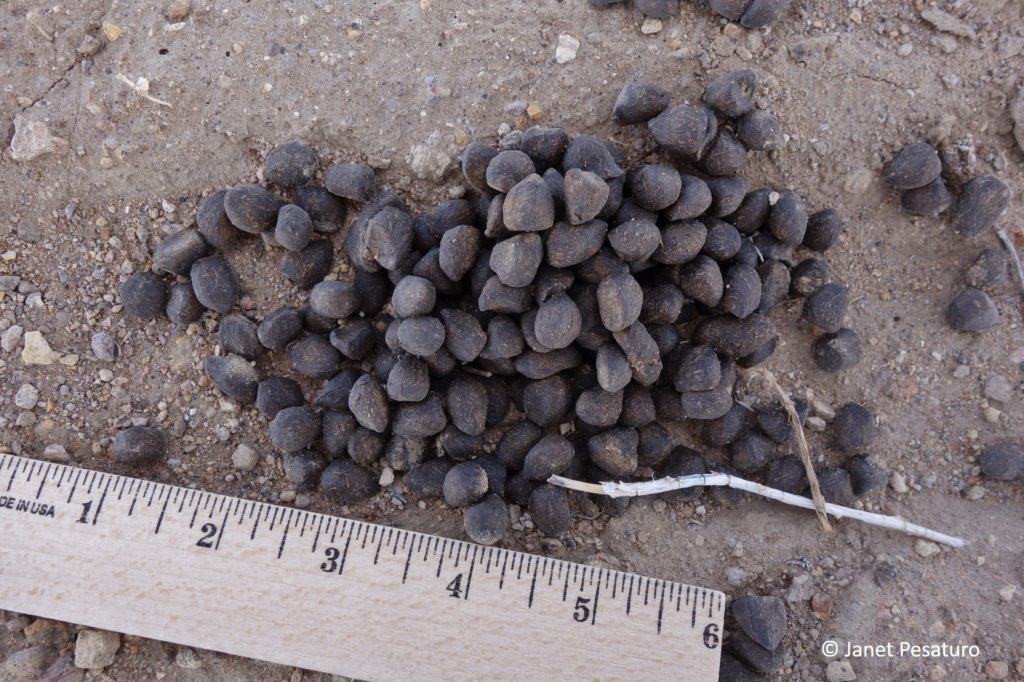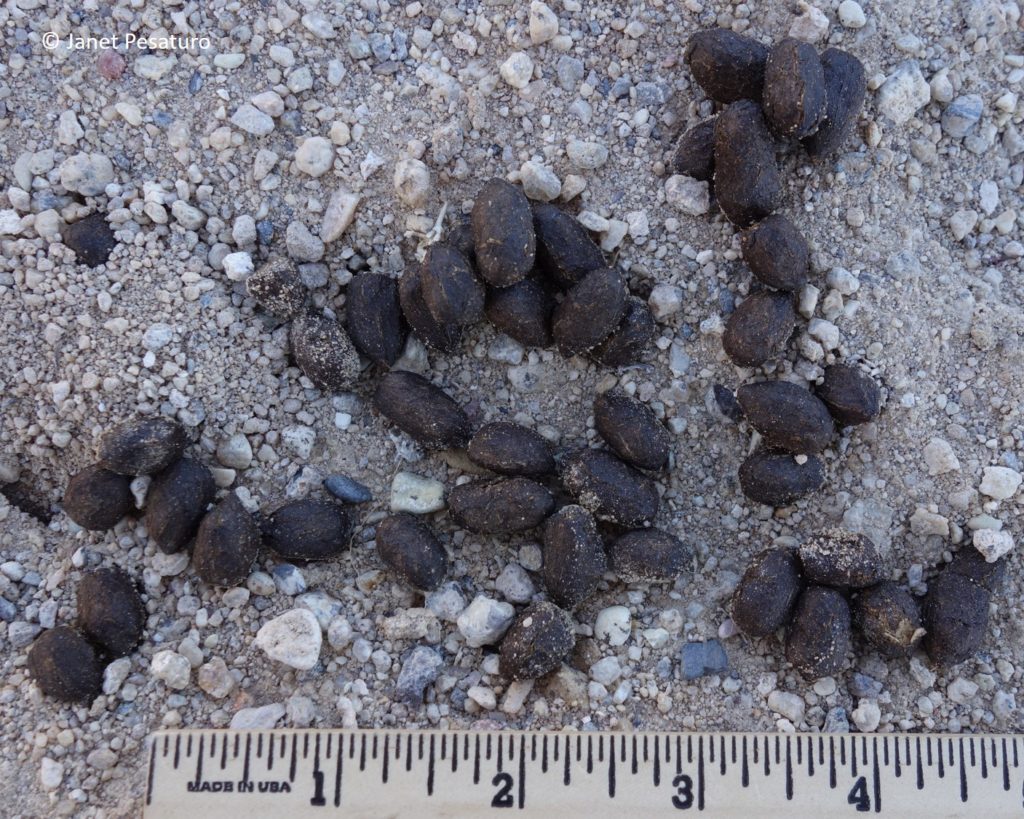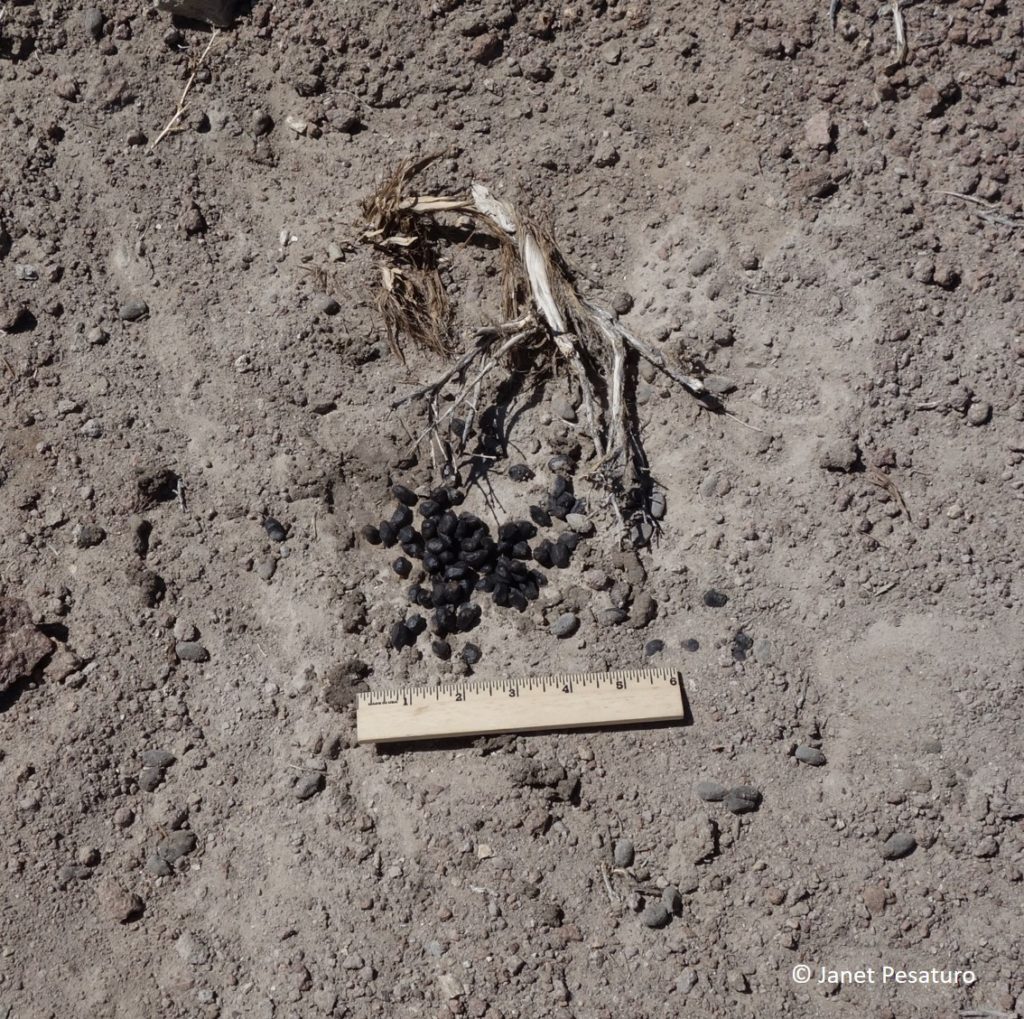Pronghorn Tracks and Sign

The pronghorn is a deer sized ungulate which walks on split hooves and produces fecal pellets, so where its range and habitat overlap with those of deer, it can be difficult to distinguish pronghorn tracks and sign from those of deer.
Let’s first have a look at the tracks. Pronghorn tracks are about the same size as deer tracks, but there are two important differences: 1. the outer edges of pronghorn tracks are concave, while those of deer are convex. And, 2. pronghorn do not have dewclaws. So the presence of dewclaw marks in the track rules out pronghorn, but the absence of dewclaws doesn’t help unless the context (e.g., splayed hoof prints in a fast running track pattern) suggest that dewclaws, if the animal were a deer, would register.

Here are some additional examples of pronghorn tracks:


Pronghorn scat is pretty much identical to deer scat, though perhaps pronghorn pellets are more often flattened or indented on one side, tapered to a point on one end, or both. Here are some examples.



Sometimes contextual clues point toward pronghorn scat. Mature pronghorn bucks often scent mark with urine and scat in a ritualistic manner, known as SPUD (Sniff-Paw-Urinate-Defecate). He sniffs the ground and then scrapes it with front hooves, thus depositing scent from interdigital glands, then urinates, and then defecates into the scrape. In desert habitats, he may scrape bare ground, but often chooses to scrape down a small plant onto which he urinates and defecates. So if deer-like pellets are found within a scrape in suitable pronghorn habitat, you are probably looking at pronghorn scat. Here is an example of a pronghorn scrape.

Bucks create these scrapes in spring, summer, and fall, but most commonly in fall, just before and during the rut. Here is a video of a pronghorn performing SPUD one September in Yellowstone National Park. I apologize for the shaky hands, but I was completely unprepared for this animal’s performance!
Compare pronghorn SPUD activity to white-tailed deer scrape action.
Pronghorn bucks also scent mark by rubbing their subauricular glands on vegetation – often on something that stands conspicuously above the surrounding vegetation, such as a mullein or teasel stalk. The animal first mouths or sniffs the tip of the stalk or branch, then rubs it with his subauricular gland in his black cheek patch. This is sometimes described as “cheek rubbing”. According to the literature, the secretion left on the stalk is sticky and pungent when fresh, but I have yet to identify vegetation marked in this way. The leading photo in this post shows a buck rubbing this gland, but at the time I took the photo (it’s not a trail cam photo), I did not realize what he was doing and did not think to inspect the plant when he was finished.
To learn more about species, check out this brief summary of pronghorn ecology.
Source:
Byers, J. A. American Pronghorn: Social Adaptations & the Ghosts of Predators Past. Chicago, IL: The University of Chicago, 1997.

Good photos.
Thank you.
Pingback:Prairie Dogs as Keystone Species - Winterberry Wildlife